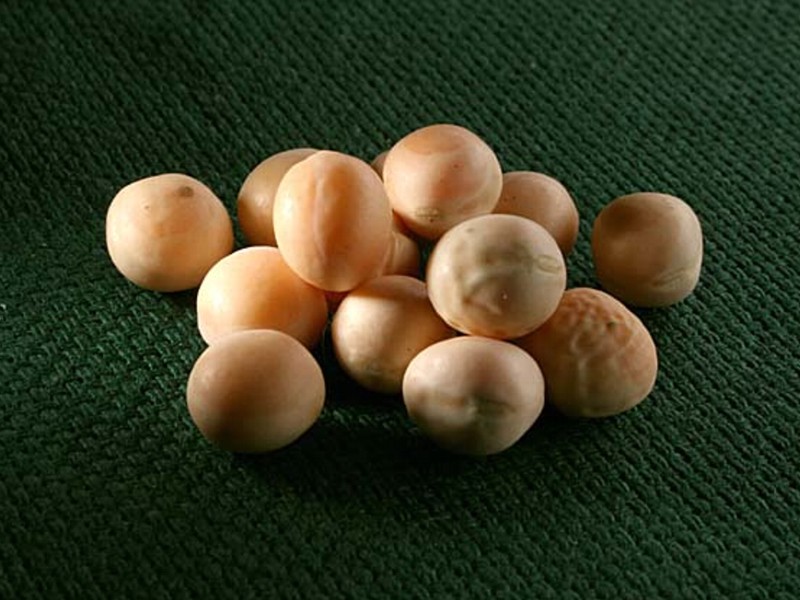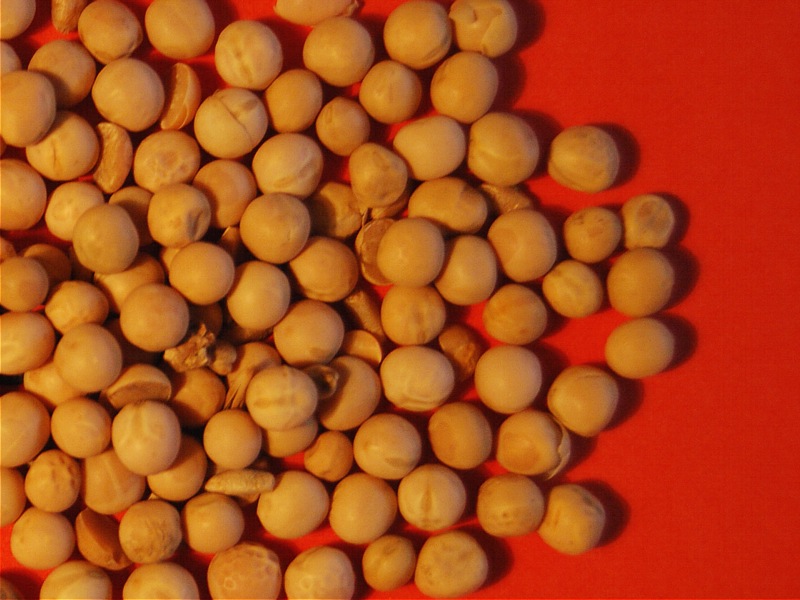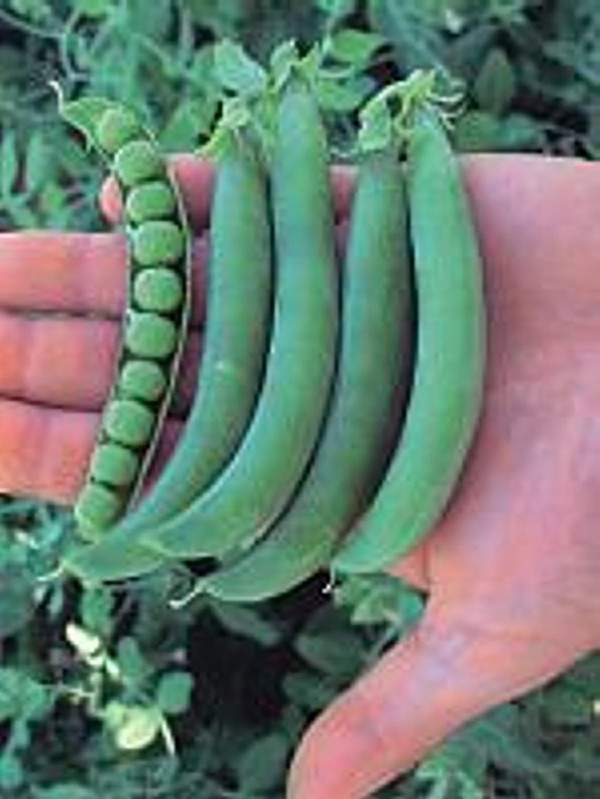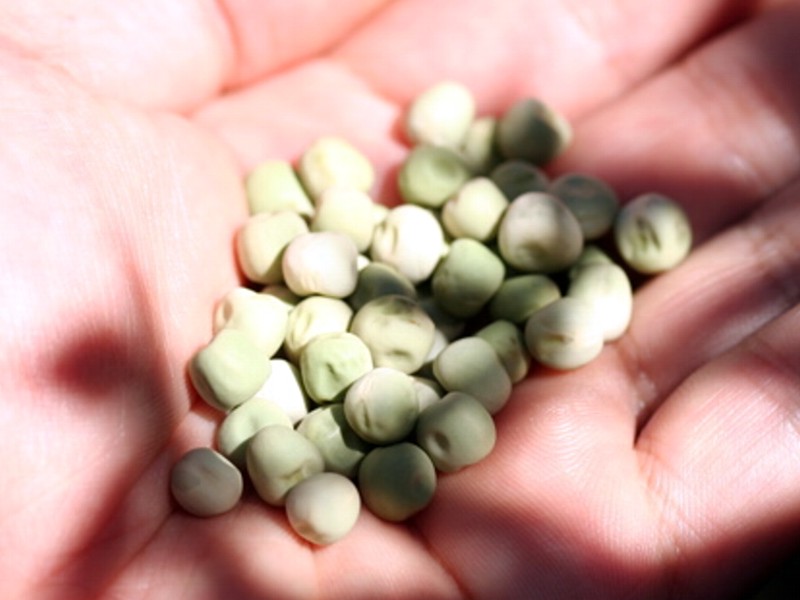Feed peas

Feed peas is acceptable source of crude protein (on the average 22 %). It's used in feed mixtures for beef-cattle, pigs as well as poultry, eventually pidgeons etc.
Peas is usually steamed, flaked or micronised before use in animal feed to improve the digestibility. Can be used to preplace soya and other protein sources but slightly lower in energy. Peas is also high in sugar and starch which makes it attractive for ruminant rations. Low in methionine, cysteine and tryptophan, but can supply some undergadable protein if heated for long periods. Oil present is unsaturated, with B vitamins present in reasonable quantities. Approximately 15 % of the starch is rumen unfermented.
Level of field peas in feed mixtures for young ones is limited (hydrogen cyanide release possibility, higher content of bitter substances).
Above 25 % will not pellet well.
Feeding recommendation
Concentrate Inclusion % per species:- Calf 10 %
- Dairy 30 %
- Beef 30 %
- Lamb 10 %
- Ewe 20 %
- Weaner 5 %
- Grower 10 %
- Finisher 17,5 %
- Sow 17,5 %
- Chick 0 %
- Broiler 0 %
- Breeder 7,5 %
- Layer 7,5 %
Antinutritive stuffs
Potential trypsin-inhibitors and/or phyto haemagglutinins (lectins, etc) present. Tannins are sometimes found in the seed coat. Heating destroys most of the antinutrive factors and new varieties have reduced the levels significantly. Can have a laxative effect.Protease inhibitor Lectins Tannins
Nutrients
| Nutrient | Fresh matter |
|
| Dry matter | g | 880,00 |
| MEn poultry | MJ | 11,91 |
| Crude protein | g | 216,39 |
| Lysine | g | 15,31 |
| Methionine | g | 2,11 |
| Meth+Cys | g | 5,46 |
| Ca | g | 0,97 |
| Non-phytate phosporus | g | 1,67 |
| Na | g | 0,26 |
| Mn | mg | 16,90 |
| Zn | mg | 35,29 |
| Vit. A | tis.m.j. | 0,17 |
| Vit. D | tis.m.j. | |
| Vit. E | mg | 14,96 |
Pictures



